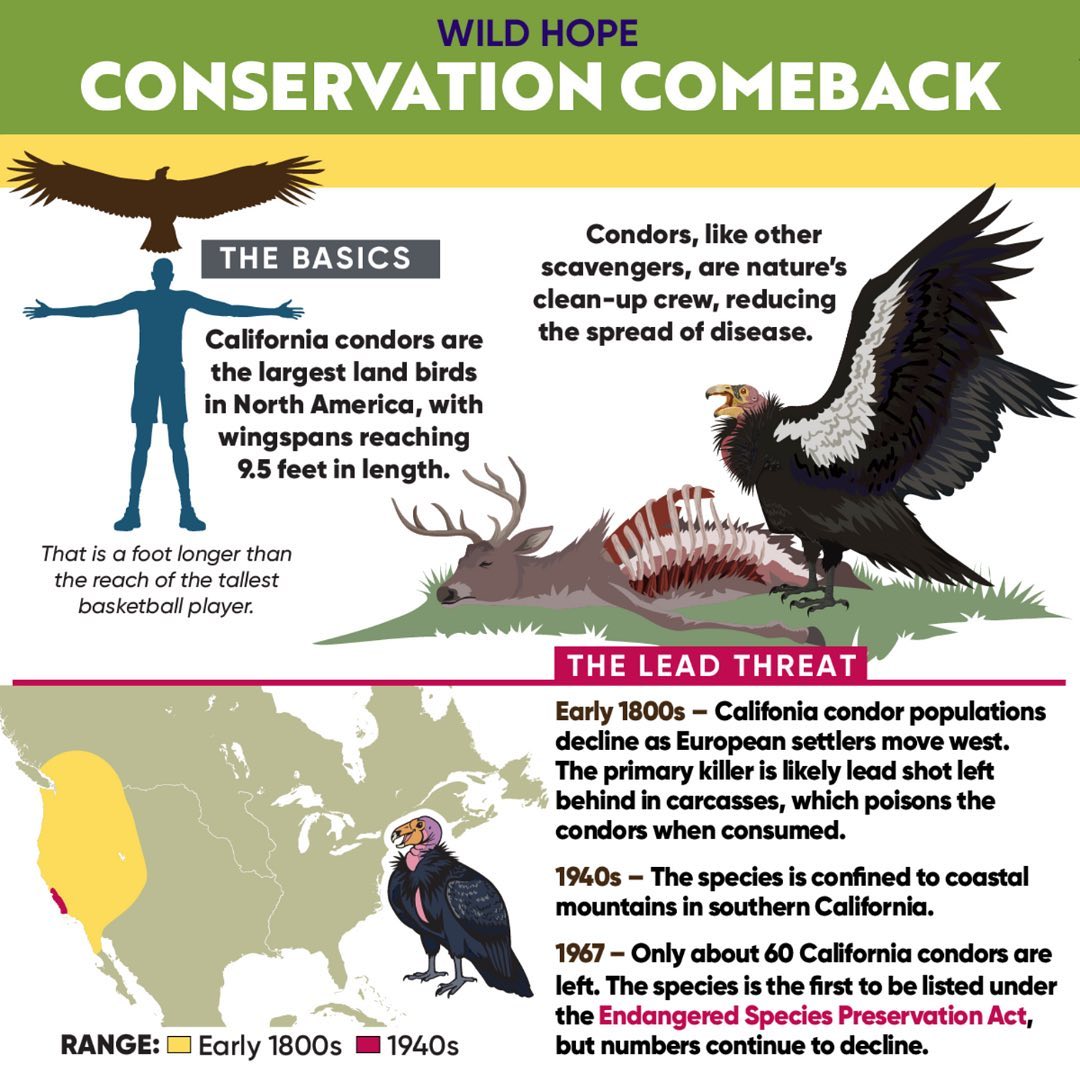– The history and decline of the California Condor population
– Key strategies employed in the conservation comeback of the California Condor
– The role of captive breeding programs in bolstering wild populations
– Ongoing challenges and efforts to sustain the California Condor population
– The importance of community and policy support for wildlife conservation
The California Condor’s conservation story is a poignant testament to nature’s resilience amidst human impact and a showcase of the concerted efforts required to bring a species back from the brink of extinction. This narrative highlights the bird’s critical situation and showcases the comprehensive strategies adopted to achieve a successful conservation turnaround.
In the late 20th century, the California Condor, North America’s largest bird, faced a dire situation. With a wingspan reaching up to 9.8 feet, the bird’s magnificence couldn’t shield it from declining to just 60 individuals, marking it as one of the first animals listed under the Endangered Species Act. The decline was attributed to a concoction of threats, including lead poisoning, habitat destruction, and micro trash ingestion. This alarming nadir elicited a robust response from conservationists, leading to one of the most ambitious rescue operations for a species teetering on the edge.
The cornerstone of the California Condor’s comeback hinged on captive breeding programs. Initiated in the 1980s, these programs took a calculated risk by capturing the remaining wild condors to breed in controlled environments. This decision, while controversial, proved pivotal. Zoos and conservation centers, including the San Diego Zoo Global and the Los Angeles Zoo, became sanctuaries for breeding and research. Through meticulous genetic management and veterinary care, these institutions have successfully bred hundreds of condors, laying a solid foundation for their reintroduction into the wild.
Reintroduction efforts have been equally strategic, focusing on habitat preservation and minimizing human-induced threats. Areas in California, Arizona, Utah, and Baja California have been designated release sites where condors could soar freely and repopulate their historical ranges. However, these efforts extend beyond merely releasing birds into the wild. Continuous monitoring, health checks, and interventions, such as lead poisoning treatment, ensure the birds’ survival and adapt strategies necessary to address emerging threats.
Despite the significant progress, the California Condor’s journey is far from over. Ongoing challenges, such as lead poisoning from ingesting ammunition in carrion, micro trash ingestion, and habitat encroachment, persist. These threats underscore the need for comprehensive wildlife management strategies, including policy advocacy, public education, and community engagement. Garnering support for policies that mitigate these threats, such as the ban on lead ammunition in California, is crucial for the condors’ long-term survival.
Community engagement and education play a pivotal role in fostering a conservation ethos among the public. Initiatives encouraging local communities to participate in conservation efforts, from lead-free hunting practices to habitat clean-up campaigns, are essential. Moreover, educational programs highlighting the condor’s role in the ecosystem and conservation journey can inspire future generations to continue these efforts.
The California Condor’s extraordinary revival from extinction to over 550 individuals in the wild and captivity is a beacon of hope. It epitomizes the impact of collaborative, science-based conservation strategies and the critical importance of maintaining the momentum. The conservation community and the public must remain vigilant, continuously adapting and expanding efforts to protect this iconic species.
Supporting the California Condor’s conservation is not just about saving a single species; it’s about preserving biodiversity, ecosystems, and the delicate balance that sustains life on our planet. It necessitates an unwavering commitment from all sectors of society—conservationists, policymakers, communities, and individuals. By fostering understanding, encouraging action, and investing in long-term conservation initiatives, we can ensure the California Condor’s skies are never silent.
*****
Source Description
Have you heard the California Condor’s Conservation Comeback story? 💚 It’s hard to believe the population of North America’s largest bird dwindled to just 60 – making it the first animal to be listed on the Endangered Species Act. 🪶 But here’s the GOOD NEWS! The count is now 350 condors soaring in the wild, with 200 more in captivity: an incredible stride forward and a poignant reminder of the delicate balance we must uphold. Let’s stay vigilant in our efforts for conservation! 🌿
Slide through this amazing carousel our friends at @peppermintnarwhal created to learn more. And let us know which fact surprised you the most! 🪺
I love this story of hope. Head to the link in our bio for a free download of the full picture and to learn more. And for more inspiration, watch Wild Hope streaming now on the PBS Nature Channel on YouTube and WildHope.tv 🌲


